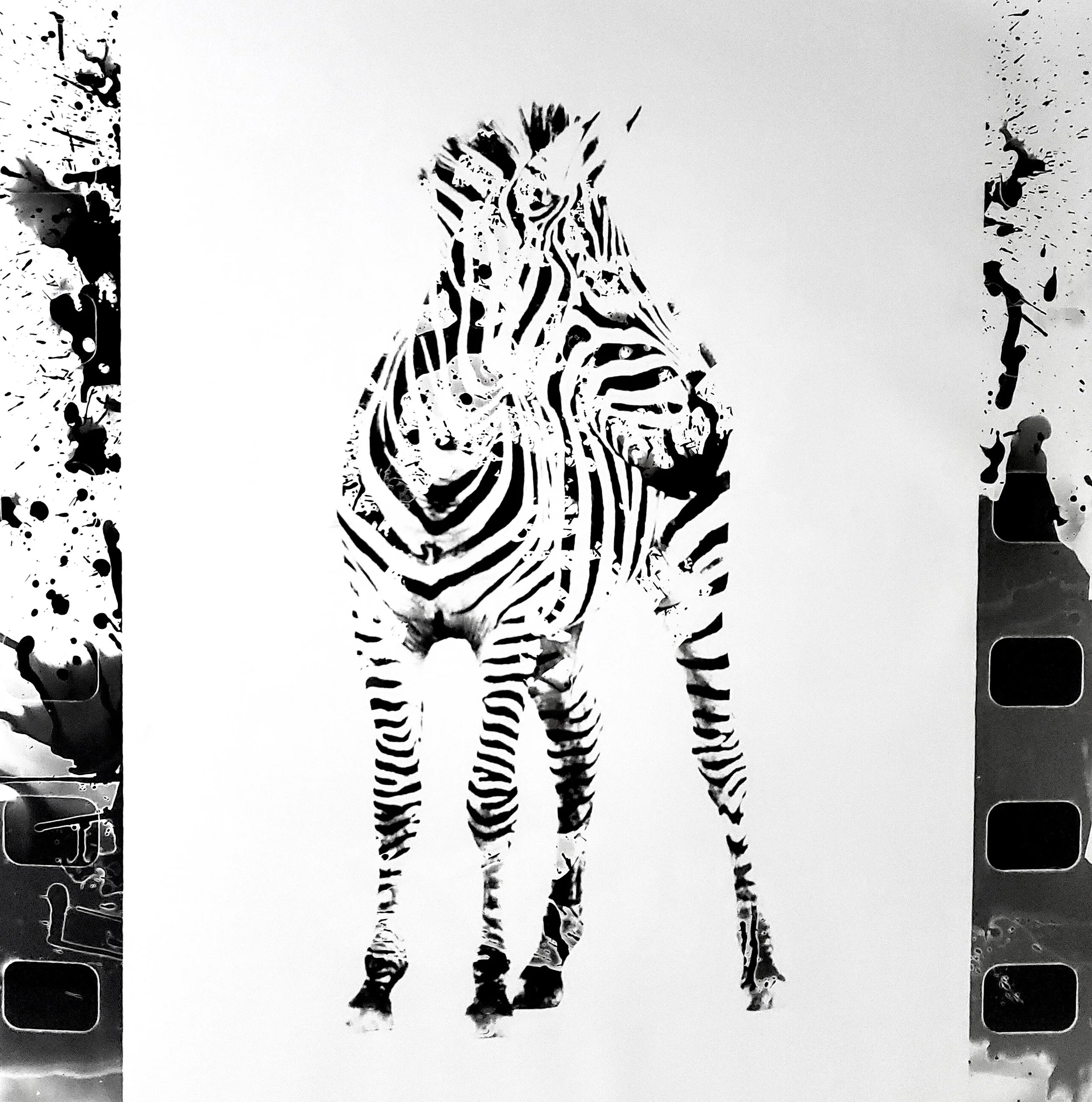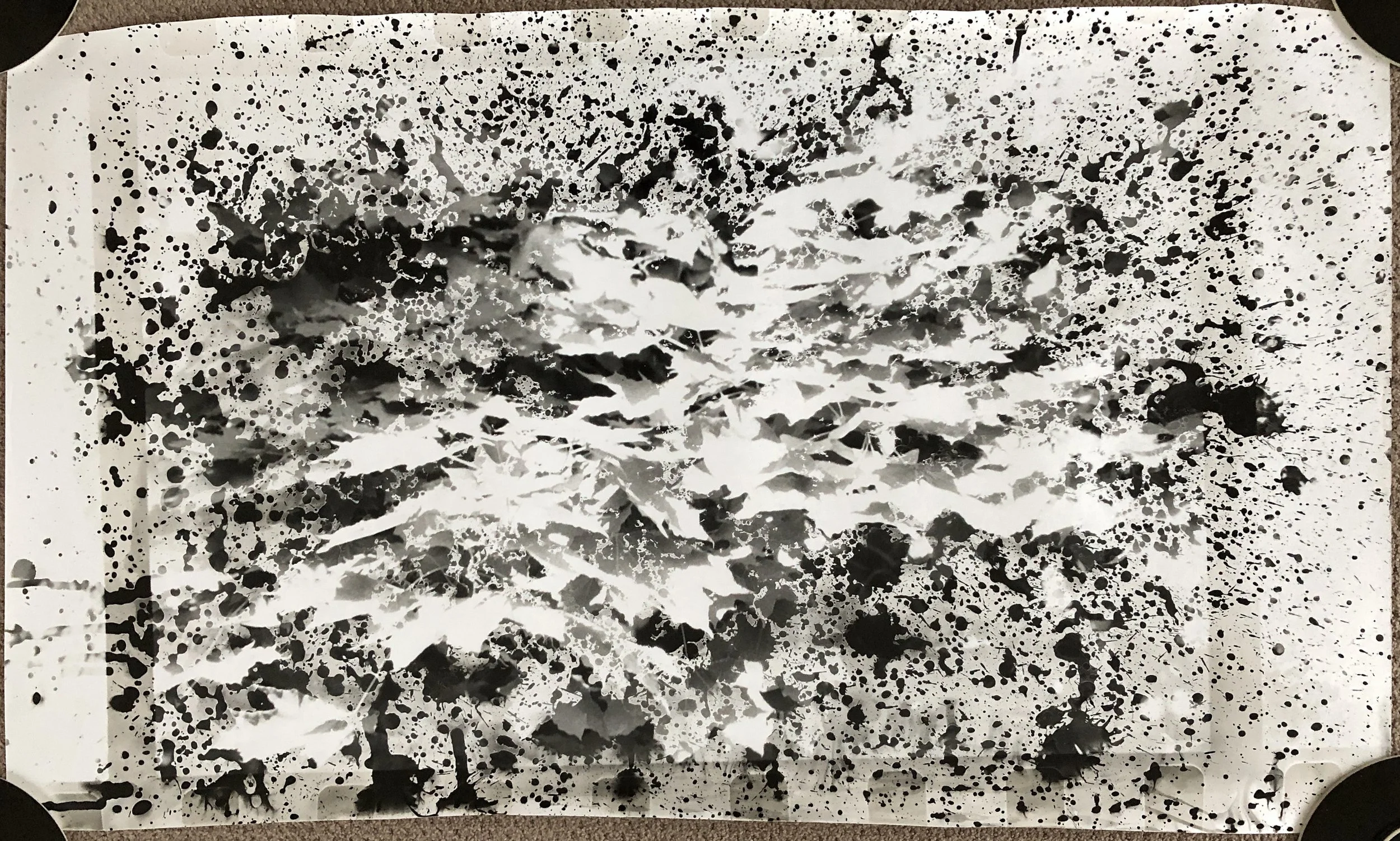Fall 2021: Just Now Photographs by Chris Bunney
October 21 - December 15, 2021
Opening Reception: Thursday, October 21st from 6 to 8 PM
511 Gallery is pleased to present Just Now Photographs by Chris Bunney, which opened on Thursday, October 21st.
Chris Bunney, Optic, silver-halide based emulsion print; 45 x 42 inches.
Chris Bunney’s most recent body of work consists of ten silver-halide based emulsion prints derived from 35mm negatives. His black and white images inhabit a space between figurative and abstract representation, and display a surrealist interest in the disassembly of human and organic forms. Bunney develops his own photographs, his hands-on distortion of material and chemical processes rendering each work a unique and one-off print. Limbs, flower petals and other figurative elements emerge from stains and scarifications that illustrate each gesture of the artist’s active development process. The resulting images are mesmerizing in their complexity and propose an uncertain relationship between concrete and abstract shape. Neither purely formalist or representational, Bunney’s works meld subject matter and technique so as to push beyond existing modes of photographic expression.
The photographs in Just Now, says the artist, “come out of COVID-19.” In a matter of weeks, the onset of the pandemic thrust regular life into the realm of the surreal and displaced everyday visual norms. Once crowded streets were deserted amidst lockdown orders, while even the fundamental and comforting sight of the human face was lost to the necessity of universal masking. The fragmented imagery put forth in Bunney's photographs mimics this breakdown of ordinary reality. The artist plays off the psychological associations of lush chrysanthemums, dynamic torsos, and other highly idealized symbols to provoke a sense of dread at the prospect of physical and mental disorientation. Though his subject matter is often obvious on a macro level, Bunney partitions figures and objects into ambiguous formal components that challenge the certainty of perception. It is unclear if shapes are built up from their abstruse constituent elements, or if they are deconstructed into them, the opaque relationship between part and whole suggesting the fragile balance of familiar experience.
Optic is a photograph of a large zebra standing between the column-like sidebars of the print’s underlying negative. It is a rare work for Bunney, one in which he appropriates outside visual material, in this case a stock-image, to create a new photograph that refutes the banality of its source. The forward-facing zebra is easily recognizable at first, and retains the almost mundane appearance of a circus or zoo animal. In the absence of strong outlines or shadows, the black stripes of its segmented coat serve as a worthy description of its overall form. Up close, however, Bunney’s experimentation with shape, light and color subverts naturalistic depth while both creating and obscuring formal boundaries. Ordinary shapes succumb to the interplay of the semi-abstract markings conjured during the work’s development, most noticeably around the zebra’s head and neck. This convergence of familiar and unfamiliar forms gives the work a distinct uneasiness. As the image disintegrates into its own details, childlike affinities for the zebra and its ties to nature give way to a voyeuristic consideration of the animal’s physical constitution. In this way, Optic transforms the innocuous into the disconcerting, and highlights the psychological turmoil that arises from disruptions to even the most benign aspects of the ordinary world.
Just Now references the spontaneity of Bunney’s process. Though the photographer primarily works from studio-captured negatives, some of which are decades old, it is not until he enters the darkroom that his final images begin to take shape. Bunney applies photo developing solutions to his nascent prints with either a cloth or sponge. Some regions of the picture plane are developed in vivid detail, while others are left blank save for streaks and blotches produced by run-off chemicals. Once a print is stabilized, the artist may further excoriate it with a selection of blunt utensils, before cutting it from the roll of photo paper to which it has thus far been attached. It is only once this process is complete, and the darkroom lights turned on, that the photographer can begin to get a sense of his own work, and to retrace the gestures just now preserved in his images.
Chris Bunney, Folio, silver-halide based emulsion print; 24.5 x 42 inches.


